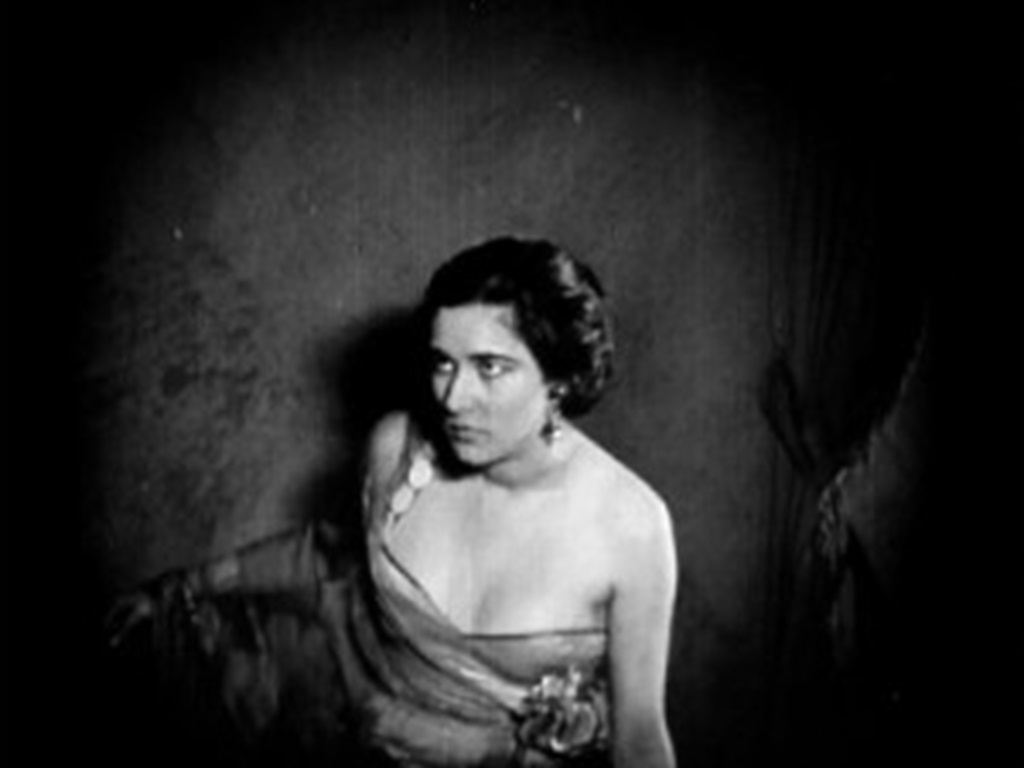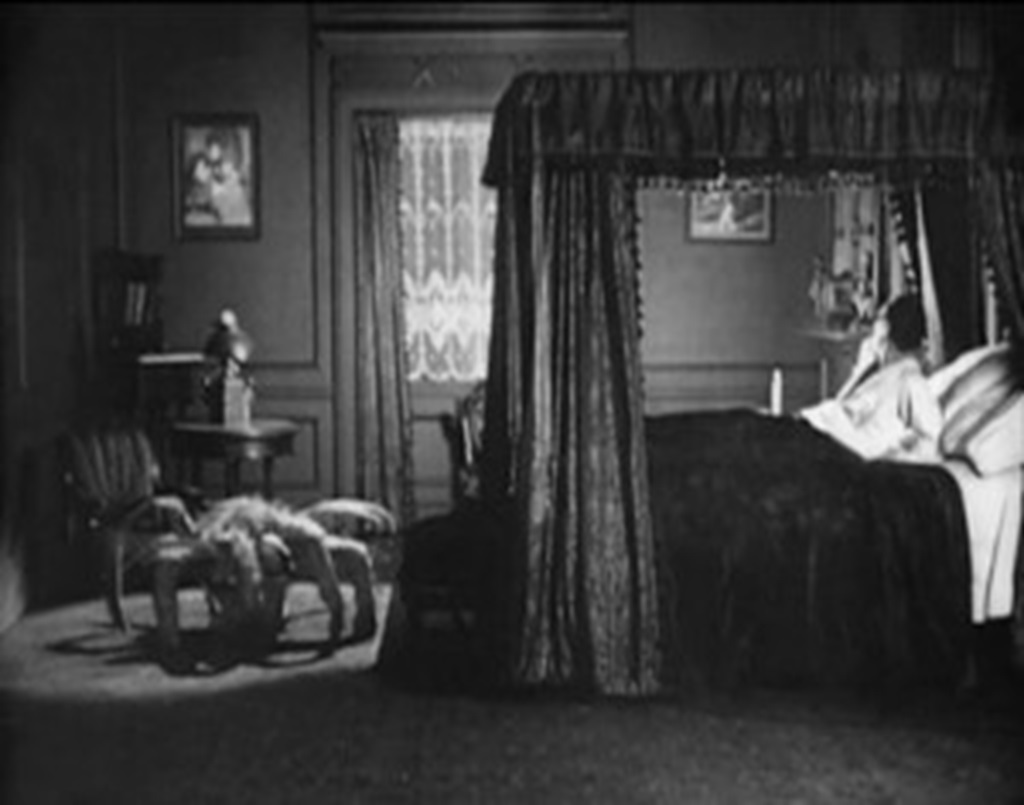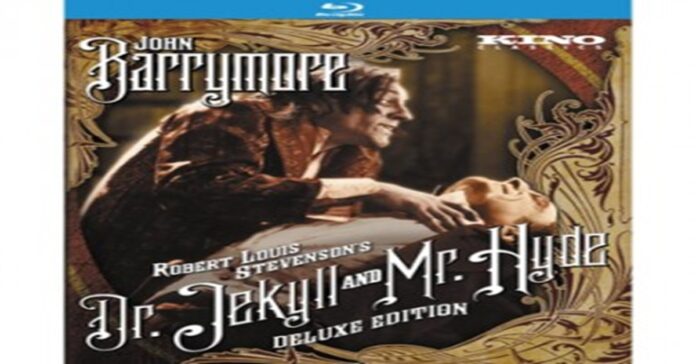Robert Louis Stevenson’s 1886 novella, “Strange Case of Dr. Jekyll and Mr. Hyde,” delves deeply into the origins of modern horror.
Stevenson’s portrayal of a split personality, one moral and the other immoral, resonated with Victorian society, which grappled with the idea of suppressing humanity’s darker instincts.
Dr. Jekyll, when freed from moral constraints, transforms into a remorseless hedonist, perpetrating acts of debauchery and murder without remorse.
The powerless Jekyll is eventually overtaken by his malevolent alter ego.
Savant Blu-ray Review: Dr. Jekyll and Mr. Hyde
Shortly after its publication, the novella was adapted into a play in London by Thomas Russell Sullivan.
The play introduced a romantic subplot and sensationalized Jekyll’s transformation, which became a pivotal moment in the production.
Renowned stage actor Richard Mansfield popularized the role of Jekyll, gaining notoriety that led to his involvement in discussions about the Jack the Ripper murders.
Years later, Armand Assante portrayed Mansfield in a TV movie depicting the stage performance, showcasing special makeup effects used to depict the transformation scenes.
The role of Jekyll and Hyde has historically attracted flamboyant actors.
By 1920, there were already eight film adaptations of the story, with “The Great Profile” John Barrymore starring in a particularly successful version produced by Adolf Zukor.
Directed by John S. Robertson, this adaptation followed Sullivan’s storyline. Barrymore’s portrayal, characterized by theatrical exaggeration, remains impressive despite feeling outdated by today’s standards.
His use of heavy makeup and contorted facial expressions, alongside strategic editing, transforms him into a monstrous Hyde with a hauntingly bald head and a twisted appearance.

Also, see Movie-Watching Memories: The Quo Vadis
When viewed in consideration of the film’s era, Barrymore’s portrayal is both astonishing and unsettling.
The reserved Jekyll often wears a vacant, dignified expression, while Hyde embodies sheer malevolence.
Contemporary perceptions of the film have been influenced by numerous parodies and the use of film clips for comedic effect out of their original context.
One specific facial expression of the actor, with his face contorted and eyes gazing downward, has been emulated by popular comedians such as Danny Kaye, Sid Caesar, Red Skelton, and even Dick Van Dyke.
The plot closely resembles the more well-known later versions by Paramount and MGM, with the exception of Rouben Mamoulian’s pre-code sexual elements and the surreal Salvador Dali dream sequences in Victor Fleming’s milder remake.
In the film, Dr. Lanyon (played by Charles Lane) cautions Jekyll against delving into “the wrong kind of science.”
Similar to the original story, attorney Utterson (portrayed by J. Malcolm Dunn) prepares the document in which Jekyll leaves his possessions to Hyde.
Additionally, Utterson competes for the affections of Millicent, Jekyll’s innocent love interest.
Millicent’s hypocritical father, Sir George Carewe (played by Brandon Hurst), encourages Jekyll to experience the seedy nightlife of Soho, advising him to indulge in his youth.
Carewe also engages in flirtatious conversation at his own party, describing a woman as “Paradise for the eyes but Hell for the soul.”
It’s worth noting that in the original novella, Carewe is a Member of Parliament, has no daughter, and is one of Hyde’s more enigmatic victims.

In all the film adaptations, one overlooked aspect is the fate of Dr. Jekyll’s charitable work.
Even before his troubles begin, Jekyll is preoccupied with his research and clinic duties, neglecting to court Millicent properly.
Similar to other renditions, it appears that the ‘indispensable’ Jekyll abandons the underprivileged children in his clinic.
Another inconsistency lies in the portrayal of Dr. Jekyll as inexperienced in sexual matters.
In Victorian London, a doctor working in a clinic for the impoverished would undoubtedly be well-versed in all aspects of human behavior, including sexuality.
Several supporting characters leave a lasting impact. Hyde’s elderly, cackling landlady is portrayed skillfully by an uncredited, toothless actress.
Louis Wolheim, known for his role in “All Quiet on the Western Front,” portrays the proprietor of the low-class music hall where the seductive dancer Gina performs.
Jekyll is visibly intrigued by her allure.
Although he withdraws and excuses himself, the spark has been ignited. A title elucidates the situation: “For the first time in his life, Jekyll had become aware of his darker impulses.”

The character of the dancer Gina is portrayed by the renowned Nita Naldi in her debut film role. She would soon rise to fame as silent cinema’s “female Valentino” in “Blood and Sand.”
Despite Naldi wearing a daringly revealing costume, her character is not given the same prominence or billing as the “virtuous” Millicent Carewe.
The film only hints at Gina’s relationship with the domineering Hyde, showing nothing more than her fearful expression upon their introduction.
A later scene attempts to illustrate the depths of Hyde’s depravity, as he encounters Gina in a seedy establishment, compares her to another prostitute in a mirror, and then dismisses both for a younger woman brought to him in an adjacent opium den.
For 1920, it’s a rather scandalous scenario: as Hyde mistreats the women at the bar, a drug addict nearby experiences hallucinations of ants crawling over his body.
As the story progresses, Jekyll’s transformations into Hyde begin to occur spontaneously, even against his will.
One transformation is depicted through a simple yet effective dissolve.
The most unusual transformation utilizes a surreal effect: pure “evil” materializes as a ghostly spider creature, which climbs onto Jekyll’s bed and merges with his body.
The grotesque creature is genuinely unsettling.

Like other tales involving malevolent alter egos, Dr. Jekyll places a mirror in his laboratory to ensure that no traits of Hyde manifest in his mild-mannered appearance.
Leading a double life, he expends great effort concealing his dark secret from his associates and Millicent.
Despite being perceived as virtuous, Jekyll is inherently susceptible to corruption and therefore not truly the opposite of Hyde.
The morally wayward Jekyll even expresses his desire to avoid taking responsibility for his actions: “I propose to do it… to yield to every impulse but leave the soul untouched.”
Following a brutal murder in the final act, the guilt-ridden Jekyll cannot bear the thought of being exposed. As expected, Millicent remains oblivious to everything.
When Lanyon and Utterson witness a transformation firsthand, they choose to deceive Millicent for her own well-being.
The lasting image is of the handsome John Barrymore, lying motionless — captured in a facial profile, naturally.
The Kino Lorber Classics Deluxe Blu-ray of Dr. Jekyll and Mr. Hyde presents a high-quality new transfer and encoding of this 97-year-old classic, which is touted as the first serious American horror film.
The primary source used for this presentation is a 35mm negative with numerous fine scratches, digs, and minor damage inherent to it.
While the image is reasonably sharp and stable, it appears that no digital cleanup has been applied. It is noted that approximately five minutes of missing footage have been reintegrated into the film.
Some introductory shots in the Carewe household seem to originate from another source, along with an intriguing flashback to the time of the Borgias, explaining the concealment of poison in a special ring.
Identifying the new scenes, if any, proves to be challenging. The previous (2004) DVD release by Kino contains the same extras but has a shorter running time.
However, this 79-minute version may be longer due to a more accurate, slower frame rate.
It’s been brought to attention that Kino’s edition may not be as comprehensive as David Shepard’s edition and notably lacks footage after the intertitle introducing Brandon Hurst as Sir George Carew.
The entire film is presented with color tinting consistent with original prints.
The Mont Alto Motion Picture Orchestra delivers a full score compiled by Rodney Sauer, which seamlessly complements the show and builds up to impressive melodramatic climaxes.
Given the variance in the style of intertitles throughout the presentation, it is evident that multiple sources were utilized to reconstruct the movie.
The first extra credited to Archivist David Shepard’s Film Preservation Associates is the 1912 James Cruze one-reel version of the story.
Despite its brevity, it is well-crafted, with future director Cruze resembling a crazed ghoul in his Hyde makeup, complete with vampire-like fangs.
At least two imitative productions followed Barrymore’s film in 1920, including F.W. Murnau’s German Der Januskopf starring Conrad Veidt, which is now considered lost.
However, Kino offers a 15-minute excerpt from Louis B. Mayer’s version, starring Sheldon Lewis, which stands as a polished show in its own right.
“The Transformation” is an audio excerpt from 1909 that appears to be a recording of a stage act. Actor Len Spencer quotes passages from Robert Louis Stevenson as part of his dramatic buildup.
The final highlight is a 1925 Stan Laurel farce titled Dr. Pyckle and Mr. Pride. Laurel’s spoof of Barrymore’s Hyde is highly amusing; he undergoes a transformation while his gum-chewing girlfriend looks on, suitably unimpressed.
Running wild in the streets, the jovial “Mr. Pride” engages in a series of juvenile pranks.
Delving into the histories of the cast members reveals that several were personal colleagues of the star.
Barrymore reportedly encouraged Louis Wolheim to pursue acting, citing that his face was suited for the stage.
However, the story of the beautiful Martha Mansfield is a tragic chapter in silent movie horror.
Three years later, on the set of The Warrens of Virginia, the actress’s dress caught fire, resulting in severe burns that claimed her life the next day. She was only 24 years old.
On a scale of Excellent, Good, Fair, and Poor,
Dr. Jekyll and Mr. Hyde Blu-ray rates:
Movie: Excellent
Video: Good
Sound: Excellent
Supplements: two other silent film interpretations of the story (see above), audio record “The Transformation”, Stan Laurel spoof short subject from 1925.
Deaf and Hearing Impaired Friendly?
YES; Subtitles: English
Packaging: Keep case
Kino Lorber Classics
1920 / B&W with tints / 1:33 flat Silent Aperture / 73 min. / Street Date January 28, 2014 / available through Kino Lorber / 34.95
Starring John Barrymore, Martha Mansfield, Brandon Hurst, Charles Lane, Nita Naldi, Louis Wolheim, J. Malcolm Dunn, George Stevens.
Cinematography Roy Overbaugh
Art Director Clark Robinson
Written by Clara Beranger from the novel by Robert Louis Stevenson
Produced by Adolph Zukor
Directed by John S. Robertson
Reviewed: January 10, 2014

